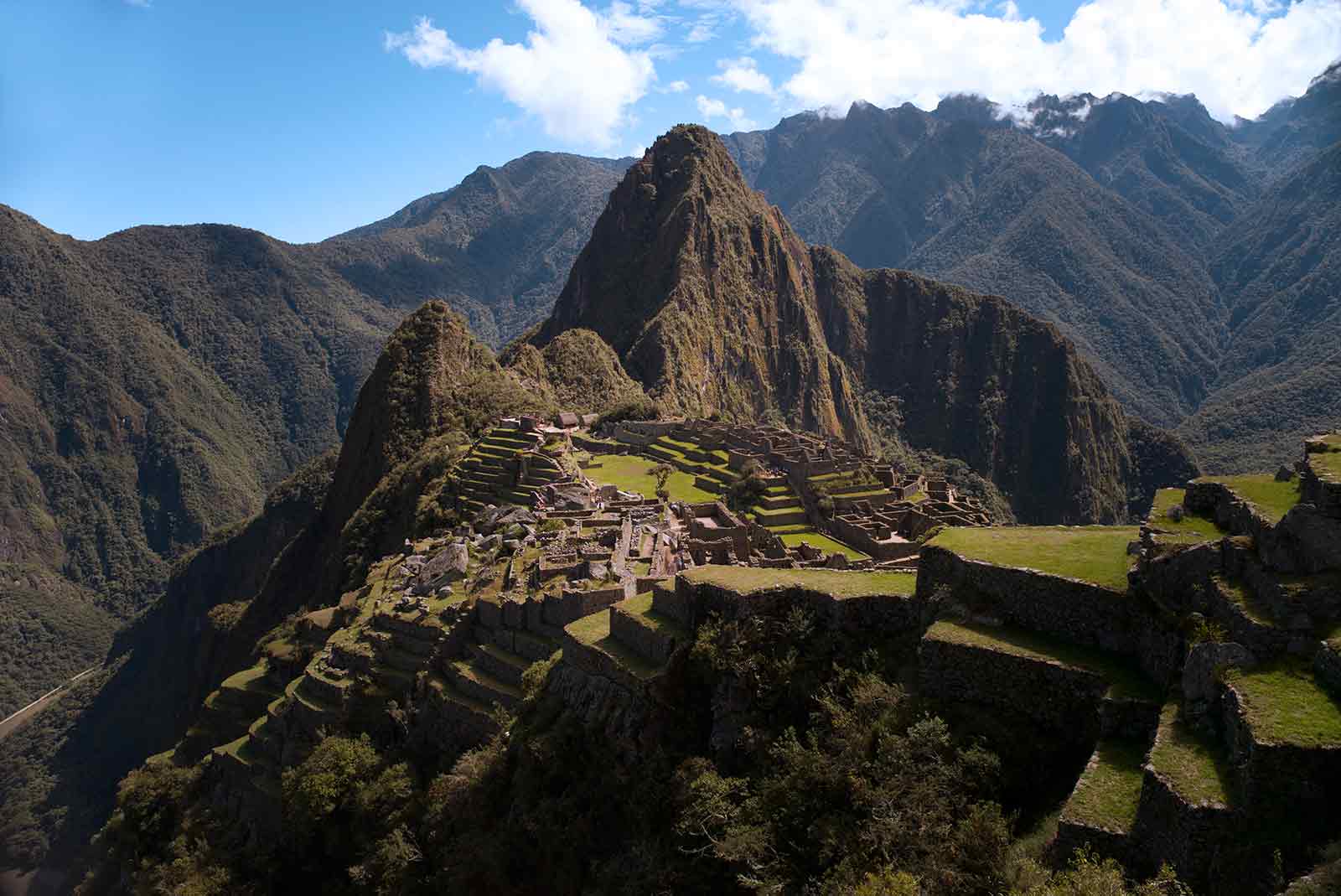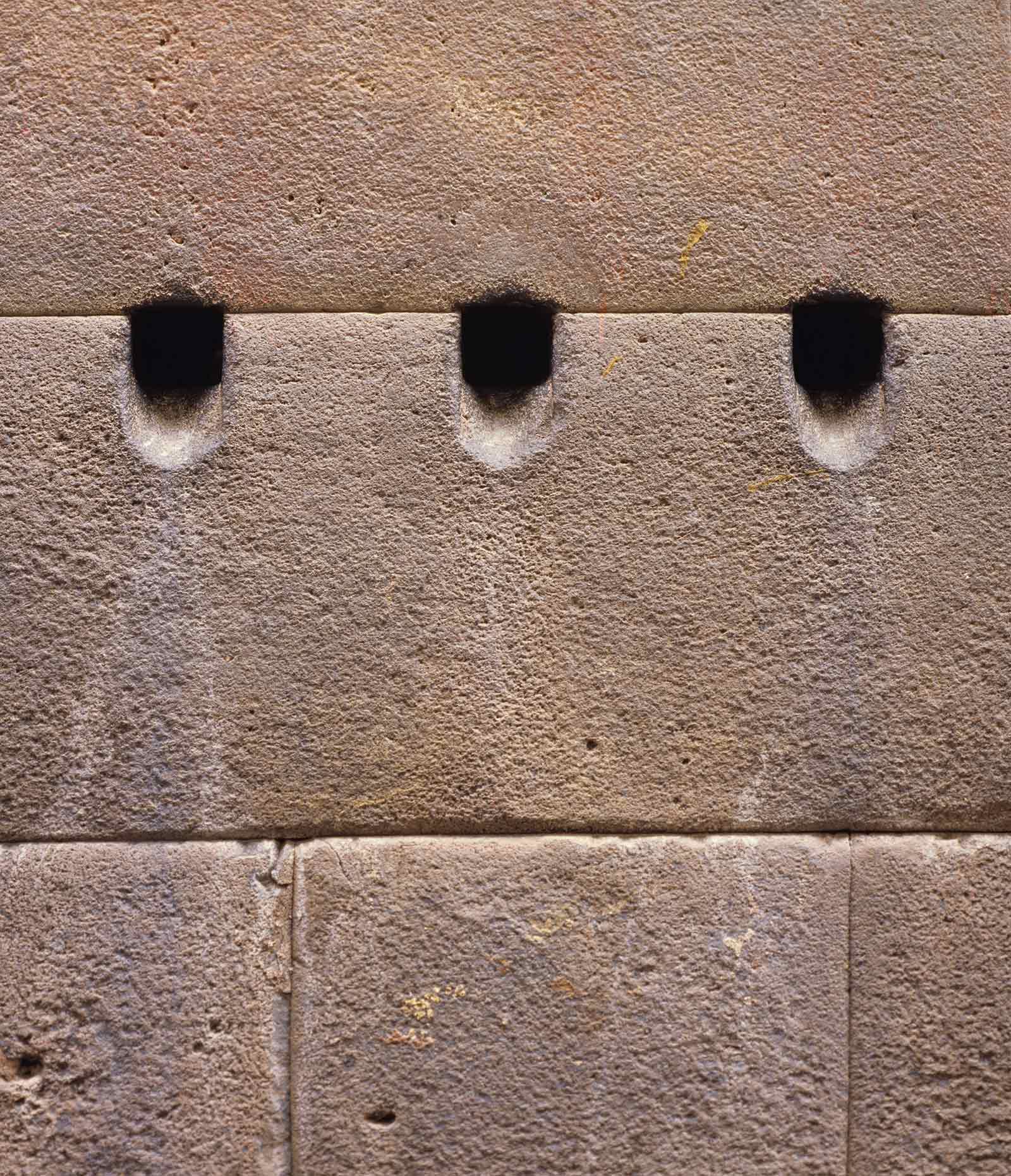What Machu Picchu can tell us about COVID-19
The coronavirus arrives in Peru, with historic irony
Adam Herring

Madre de piedra, espuma de los cóndores (mother of stone, semen of condors): that was Pablo Neruda’s impression of Machu Picchu, the hot literary take of 1950.[1] Machu Picchu has inspired poetic, philosophical, and patriotic works over the years. More recently, however, it has also invited fears of catastrophe, as reports and opinion pieces from around the world have denounced Peru’s shortsighted and venal plan to build a new airport near the site. President Martín Vizcarra of Peru “is determined to destroy this sacred place,” read an op-ed in the New York Times this past year.[2] That project would, the author wrote, “irreparably damage the heartland of the Inca civilization.”
No question, Machu Picchu is in danger. An ancient ruin faced with imminent ruin: that statement’s double edge should tell us something about our own thinking. The truth is we’ve long made American antiquity the natural home of disaster. Our scientists and historians offer up so many examples, from the dinosaur-killing meteor strike at Chicxulub, Yucatan, to “the Maya droughts” that extinguished the glittering cities of the Central American rainforest. Ancient catastrophes offer convenient proxies for our own political struggles and societal failures. We can’t help but map the calamities of our time onto the past. We log on and read down the page. Disaster sells.
Of course, the scientists’ findings are true, and the preservationists’ warnings are warranted. Still, we might do well to temper our racing fascination with sudden ruin. Throttle back on the catastrophism, and the past quietly speaks in its own voice. By allowing it to do so, ancient monuments like Machu Picchu begin to comment more incisively on our own calamities.
This all came to mind in early March as the World Health Organization reported the first confirmed case of COVID-19 in Peru. Peru’s patient zero was a twenty-five-year-old who had returned from travel in France, Spain, and the Czech Republic. While I can’t say for certain, the unfortunate victim has all the appearances of a young person back from the bucket-list tour of Paris, Barcelona, and Prague. Machu Picchu is hardwired into that same touristic circuit, one more attraction on the same grand tour. The site is visited by upward of 1.5 million tourists per year, most of them young people who make the long trip to the Andean nation from abroad. Along with the floes of Iceland and Thailand’s beach towns, it is another day’s entry for the motorcycle diary. What brought COVID-19 to Peru was global youth culture, a cosmopolitan twenty-something back from a world adventure. On the closed loop of the global pilgrimage road, what goes around comes around: to my way of thinking, it was Machu Picchu that drew Peru into the coronavirus pandemic.
The Inca lords of Machu Picchu might have chuckled. Those aristocrats built Machu Picchu in large measure to escape runaway contagion in their capital city of Cuzco. Machu Picchu was in fact a “retreat,” a country estate intended for the Inca ruler’s occasional stay. The king and his retinue were Machu Picchu’s summer people. The months of January through March are high summer in the Andes; a time of strong sun and heavy rains, it is a beautiful season, if also miserable. Plants come to life and burgeon, though so do microbes that had lain dormant over the previous months of cold and dry. Summer in the high Andes is the flu season. Trust me. In the rainy month of January, everyone is sick.
Back in Cuzco, the monsoon’s arrival saw the Inca state shift into rhetorical high gear. Cuzco was the capital of Tawantinsuyu, “Realm of the Four Quarters,” an empire of cosmic design that extended to the far reaches of the Andean world. The Inca leadership were the Andes’ upstarts, late arrivals who harbored ambitions of pan-Andean sovereignty. In times of trouble, their universal capital was another xenophobic hill town, an island in a sea of enemies: universal Cuzco now reverted to Cuzco against all. Ordinary Incas engaged in weeks of ritual meant to expunge sickness from the city. Citua, “radiance,” was the ritual period’s name, as if the city were a gleaming gem that threw off colored light, though in its performance, the overriding image of Citua was that of black-water runoff. Citua was less Cuzco’s great radiance than a grim deep-clean, a grand flushing of bodily effluent.

In their homes, women mopped their floors to purge the house of disease, cursing as they pushed muck out the door. Young men were then assembled at the center of the city. They were to finish the job the housewives had started. Armed for war, they were ordered to quick-march to the four corners of the Andean world. They raced down the Incas’ fine highways, chanting and singing. The young men performed “runoff”: they were fast-running rivers, turbid and noisy—but more remarkable, for they could flow up Andean mountain slopes as well as down. They washed Cuzco’s seasonal affliction to the Amazonian forests of the east, the Pacific in the west, the deserts of the north, and Patagonia’s mountain ranges in the south.
In the capital, the Inca rank and file had now gorged themselves with the political red meat of military spectacle. Epidemiologists today would point out that the Incas’ leaders were taking advantage of two facts of seasonal flu—on the one hand, its high morbidity (high rate of infection), and on the other, its low mortality (low rate of death). As well as a third fact, the flu’s relatively short stay. Seasonal infections lift from a population in much the same way they come on, suddenly but predictably. (I call it flu, though the bug that afflicted Cuzco each year was not strictly influenza—that particular virus arrived in the western hemisphere after 1492.)
That was the rainy season in the populous, sneezy capital. From their perch at Machu Picchu, the king and his entourage rode out the flu-season in comfort, enjoying the spectacular views. Removed from the capital, the ruler and his retinue were protected from his subjects’ contagion. A human shield of servants and retainers surrounded the Inca king—litter-bearers, bodyguards, attendants. His clothing was handled the way medical quarantine units treat patients’ gowns and bedclothing now: wear once, then burn. The Spanish witnesses who saw these elaborate protocols of social distancing were dumbfounded with admiration.
And like any trophy property, Machu Picchu could not support itself. Only seven hundred or so laborers lived at the site year-round, but the estate could not produce enough grain to feed them. For all their soaring beauty, Machu Picchu’s cliffside terraces only amounted to about ten acres of arable land. Food was hauled in from elsewhere on llamas and porters’ backs. After the European invasion, Machu Picchu lapsed into abandonment and historical obscurity. The place had little purpose absent Inca royal privilege, and little means of survival without it. Caught in the grinding gears of social hygiene and environmental sustainability, the flu-season refuge of Machu Picchu soon became a silent monument to ecological overshoot. If a monument we can’t visit in the near term, it remains seductive clickbait for the era of peak oil.
- Pablo Neruda, “Canto VI,” Canto General (Caracas: Biblioteca Ayacucho, 1981), p. 23.
- Sonia Goldenberg, “Machu Picchu Is in Unnecessary Danger,” The New York Times, 12 July 2019 (online version).
Adam Herring teaches art history in the Meadows School of the Arts at Southern Methodist University in Dallas. The recipient of a Guggenheim Fellowship in 2017, he is writing a book on art and ecology in Inca Peru.
Spotted an error? Email us at corrections at cabinetmagazine dot org.
If you’ve enjoyed the free articles that we offer on our site, please consider subscribing to our nonprofit magazine. You get twelve online issues and unlimited access to all our archives.